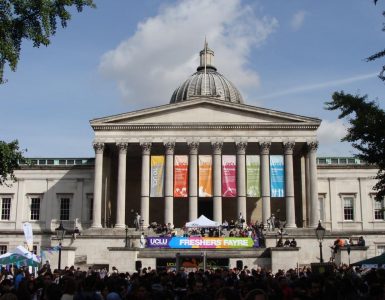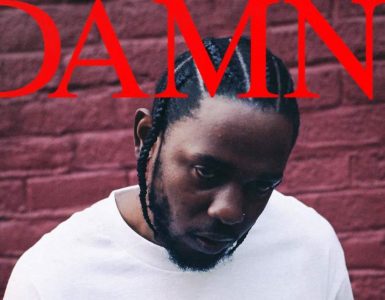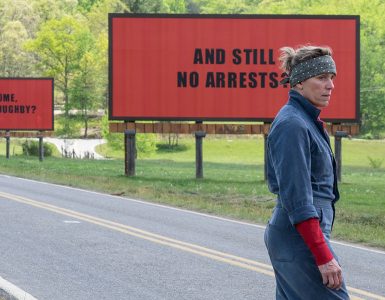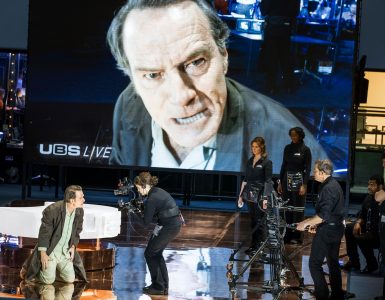In this review, Gonçalo Birra contemplates the emotional dynamics and politics at play in Alfredo Jaar’s current exhibition, The Garden of Good and Evil.
I believe that we have lost the ability to see and be moved by images. Nothing moves us any more, nothing has any meaning. My work is a kind of poetic meditation about the power of images” (Alfredo Jaar, The Garden of Good and Evil, 2017).
This is the rather pessimistic introduction given by Alfredo Jaar to his current show, The Garden of Good and Evil at the Yorkshire Sculpture Park. Jaar speaks to us about a certain inability to see and be affected by imagery. For the artist, this dual-state of blindness and apathy divests things – images, objects and bodies – of meaning too. His introductory statement and the subsequent work that makes up the exhibition aims to restore an emotive and meditative way of seeing to the viewer. That is, his show strives to comment on and reinvigorate our affective response to images; yet, in doing so, Jaar risks alienating his audience and dulling our ability to connect even more.
And still I attempted to forge a connection with Jaar’s work. I wanted to meditate on ‘the power’ of his ‘images’. I navigated the exhibition by aligning myself, my body, with the artist’s thoughts and intentions, jumping into the battlefield. I wanted to behave in conformity with what had been decided and curated, becoming the experiment. Beginning with Jaar’s introductory statement, I tried to test the emotional parameters both of his work and my own experience.
The Garden of Good and Evil is title to both the exhibition and the first installation we encounter before entering the enclosed gallery space. Created especially for this show, the 101 tree arrangement shelters 9 steel cells in what is a reference to the US secret facilities, or ‘black sites’, where people are detained and interrogated. The mood changes abruptly as we walk into the beautifully designed foyer of the Underground Gallery, only to encounter I can’t go on. I’ll go on. (2016), a phrase taken from Samuel Beckett’s The Unnameable (1954). For Jaar, this phrase is a perfect metaphor for the times of “absolute chaos and confusion” we are living in. So far, the artist hasn’t stopped bombarding us with inferred violence, all the while expecting us to agree; I am not moved.
I am reluctant to say why I don’t feel moved just yet, so I proceed into the next room, where the intense neon lights from The Sound of Silence (2005) take over my body. In this piece, Jaar recounts the story of photographer Kevin Carter who documented the 1993 Sudanese famine. In a dark room on a black wall, hidden behind strident lights, are projected words that describe Carter’s life. These projected phrases are then interrupted by the image of a Sudanese child lying next to a vulture. My silent gaze (acting in accordance to the embedded rules of an art gallery), wants to cry — not only do I feel ‘moved’, I feel rage. Kevin Carter committed suicide after his picture won the Pulitzer Prize, but I wonder whether this is Jaar’s story to tell or not. I feel powerless; I feel like leaving the space and not coming back. I feel numb. The artist has re-written someone else’s history of pain and presents it now here, in the wealthy north hemisphere, translating it into a ‘work of art’. This is not activism, I think to myself, this is what we have been doing all along, perpetuating the gap between us and the ‘other’. At this stage I am doubtful; I become arrogant.
A Hundred Times Nguyen (potentially the most famous work in the show), repeats different arrangements of the same portrait — Nguyen, a young Vietnamese refugee in Hong Kong. For Jaar, this image (taken in 1991) encapsulates his experience when visiting refugee detention centers. Numbers seem important here — this young girl appears 100 times. As I look at a hundred images of this stranger, I question the artist’s gaze, not my own. Is this child an image of war? Is this young girl the embodiment of violence and pain experienced in a ‘refugee detention camp’? Where was the artist when he took this picture? Was he simply walking by? I must say this was the first time I truly questioned the artist’s intentions. Once again, a foreign body — foreign to all this pain — lands in the middle of a conflict, collects imagery which is then signed, labelled, sold and exhibited, under the ‘raising awareness’ premise. The image of Nguyen stays in my mind, not the war, not the pain, not my responsibility.
Closing the exhibition is BE AFRAID OF THE ENORMITY OF THE POSSIBLE (2015), which is a quotation taken from E. M. Cioran’s On the Heights of Despair (1934). This work seems to wrap up the emotional rollercoaster perfectly — yet another note on how bad things can be.
Throughout this show I was taken over by different emotions, feelings and states of mind. I felt shocked not by the images themselves, but by the artist’s discourse. Having aligned myself with his views, I felt a constant conflict within myself — was this necessary? Was this experience a revelation? Was it a reminder of how war, authority and power is, in part, our (the West’s) fault? Jaar experienced the dictatorial regimes of South America, but does that make his discourse more plausible? Can he re-write someone else’s skin? Unlike a meditation, his work made me feel arrogant and irritable rather than at peace. I didn’t find any answers within myself, nor in the work. It felt like yet another stranger overlooking others’ suffering, embellishing it, making it ‘presentable’.
The Garden of Good and Evil is at the Yorkshire Sculpture Park until April 8th 2018.
















Add comment